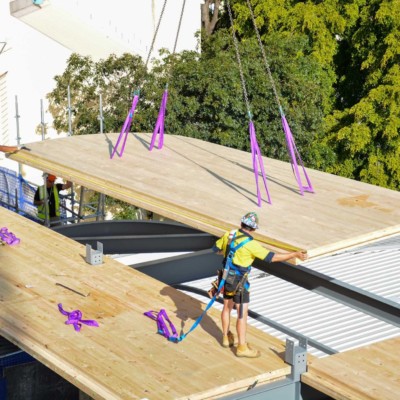
#19 Hybrid Timber‐Steel Structural Systems for Mid to High Rise Buildings – Phase 1 Scoping Study
Mid-to-high-rise buildings in Australia are mainly constructed using reinforced concrete structures and have large carbon footprints.
Advanced manufacturing of engineered timber products, such as CLT and Glulam, as well as cold formed steel/high strength steel, with high strength-to-weight ratio, have paved the way for construction of those buildings, using hybrid timber-steel structural systems with a reduced carbon footprint.
Lightweight hybrid timber-steel systems may also enable a reduction in construction cost and time by allowing a DfMA approach to be taken to design and construction, and allowing the manufacturing of building components offsite.
Despite the potential of hybrid structures, and unlike North America and Europe, the high-rise building market in Australia is still dominated by concrete structures, and the use of steel and timber has made few in-roads into this market.
This project reviewed developments in hybrid timber-steel buildings to identify the barriers to the take-up of this technology in Australia, with a focus on medium and high-rise buildings.
Researchers on this project included: Assoc. Prof Amin Heidarpour, Prof Tuan Ngo, Dr Craig Cowled, Dr Rackel San Nicolas, Mohammad Amin Farmani, Ali Shahin, Alireza Akbarzadeh Chiniforush.
Image credit: 547 Ann Street Fortitude Valley, QLD, Fulton Trotter Architects, Bligh Tanner and Kane Construction. CLT supplied by Xlam.

